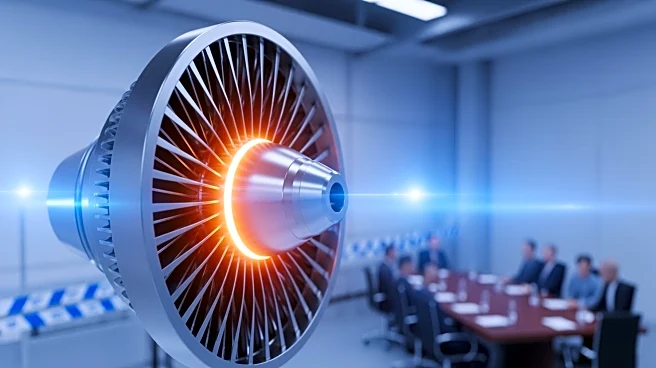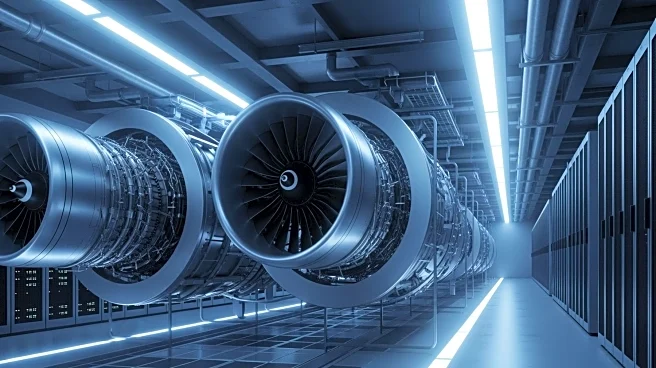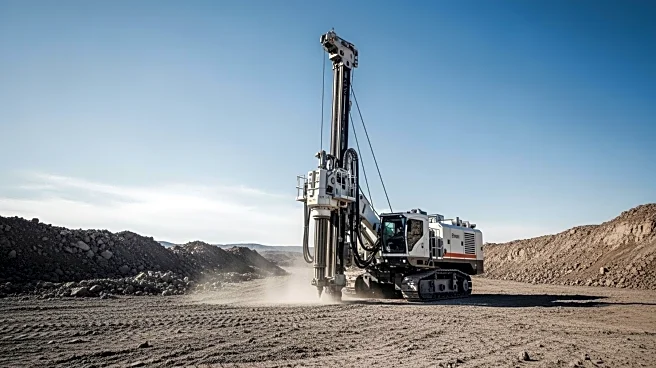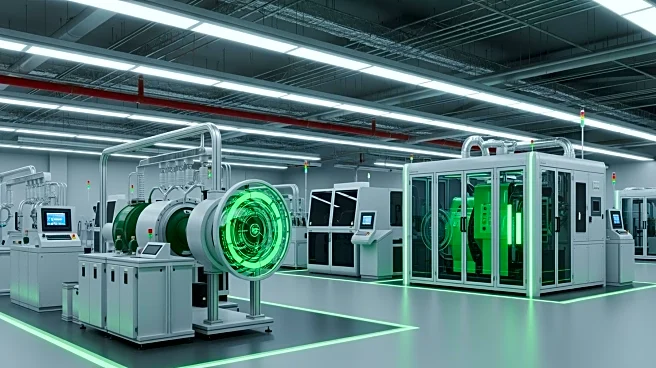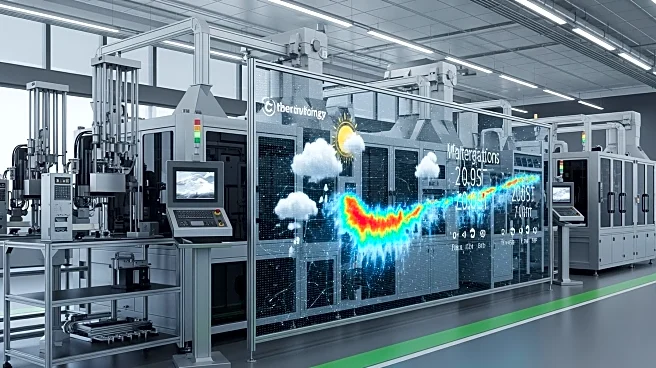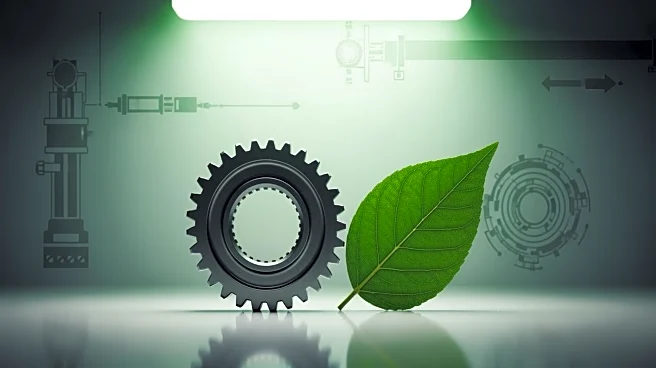What's Happening?
Scientists have successfully developed a new chromium-molybdenum-silicon alloy that withstands extreme heat while remaining ductile and oxidation-resistant. This breakthrough material could potentially
replace nickel-based superalloys, which are currently limited to operating temperatures of about 1,100°C. The new alloy, developed by researchers at the Karlsruher Institut für Technologie (KIT), exhibits a melting point of approximately 2,000°C and oxidizes slowly even at high temperatures. This advancement marks a significant step towards more efficient turbines and engines, which could lead to cleaner and more powerful energy systems. The research was conducted under the German Research Foundation's MatCom-ComMat program, with significant contributions from Dr. Alexander Kauffmann, now a professor at Ruhr University Bochum.
Why It's Important?
The development of this superalloy is crucial for industries reliant on high-temperature systems, such as aviation and power generation. By enabling components to operate at temperatures higher than 1,100°C, the alloy could significantly increase the efficiency of combustion processes, reducing fuel consumption and CO2 emissions. This is particularly relevant for aviation, where electric-powered airplanes are not yet feasible for long-haul flights. The new material could also benefit stationary gas turbines in power plants, contributing to lower emissions and more sustainable energy production. The discovery represents a milestone in fundamental research, offering a foundation for further advancements in materials science.
What's Next?
While the alloy shows promise, further development steps are necessary to enable its industrial application. Research groups worldwide are expected to build on this achievement, exploring ways to integrate the material into existing systems. The focus will likely be on optimizing the alloy's properties for specific applications and scaling up production processes. The potential for a technological leap in high-temperature applications could drive innovation across multiple sectors, including aerospace and energy.
Beyond the Headlines
The discovery of this superalloy highlights the importance of interdisciplinary research and collaboration in advancing materials science. It underscores the potential for fundamental research to drive technological innovation and address global challenges such as energy efficiency and environmental sustainability. The alloy's unique properties could pave the way for new design paradigms in high-temperature engineering, fostering a shift towards more resilient and efficient systems.
